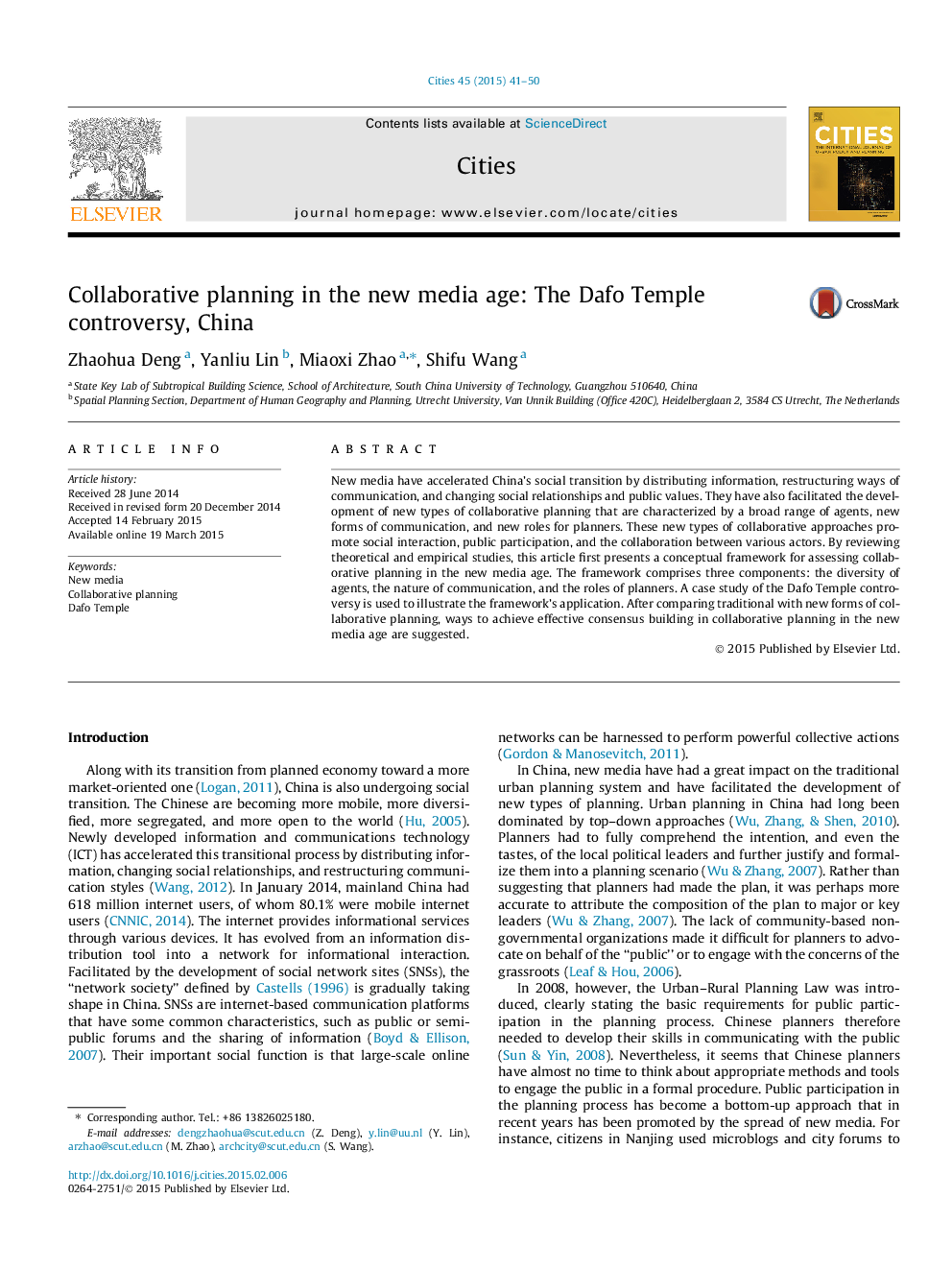| Article ID | Journal | Published Year | Pages | File Type |
|---|---|---|---|---|
| 7418502 | Cities | 2015 | 10 Pages |
Abstract
New media have accelerated China's social transition by distributing information, restructuring ways of communication, and changing social relationships and public values. They have also facilitated the development of new types of collaborative planning that are characterized by a broad range of agents, new forms of communication, and new roles for planners. These new types of collaborative approaches promote social interaction, public participation, and the collaboration between various actors. By reviewing theoretical and empirical studies, this article first presents a conceptual framework for assessing collaborative planning in the new media age. The framework comprises three components: the diversity of agents, the nature of communication, and the roles of planners. A case study of the Dafo Temple controversy is used to illustrate the framework's application. After comparing traditional with new forms of collaborative planning, ways to achieve effective consensus building in collaborative planning in the new media age are suggested.
Keywords
Related Topics
Social Sciences and Humanities
Business, Management and Accounting
Tourism, Leisure and Hospitality Management
Authors
Zhaohua Deng, Yanliu Lin, Miaoxi Zhao, Shifu Wang,
